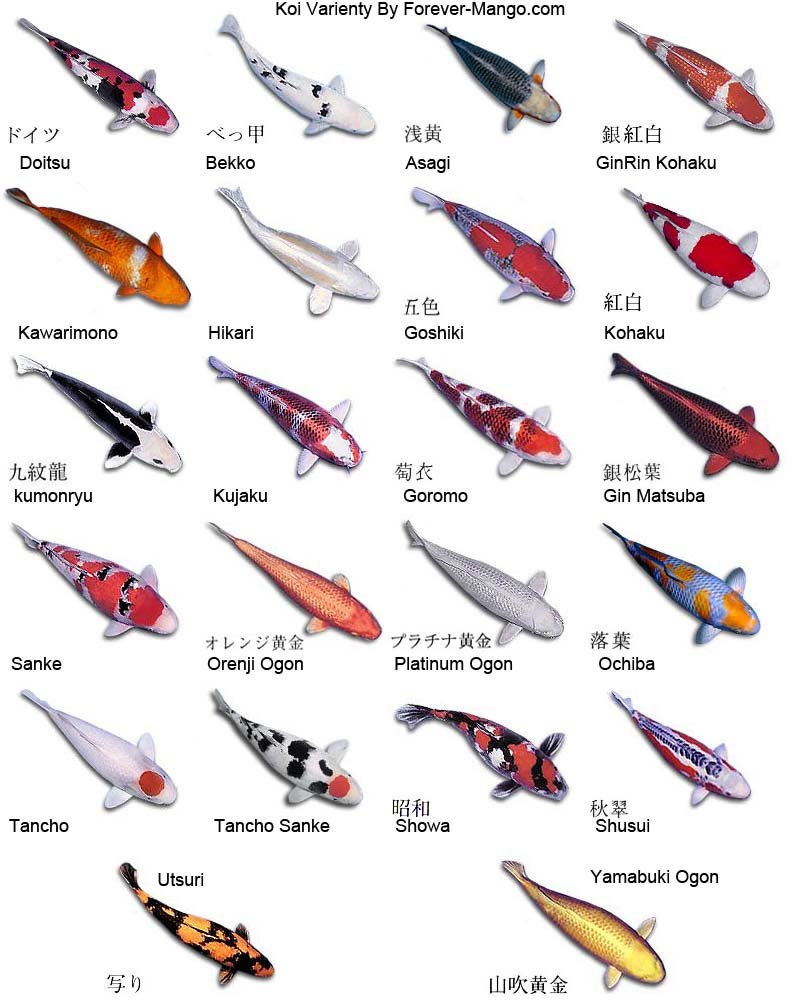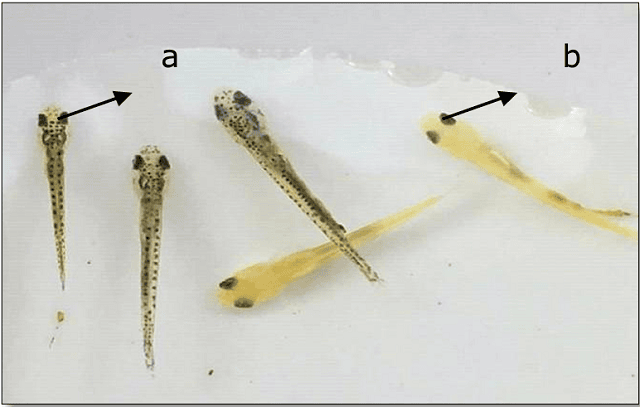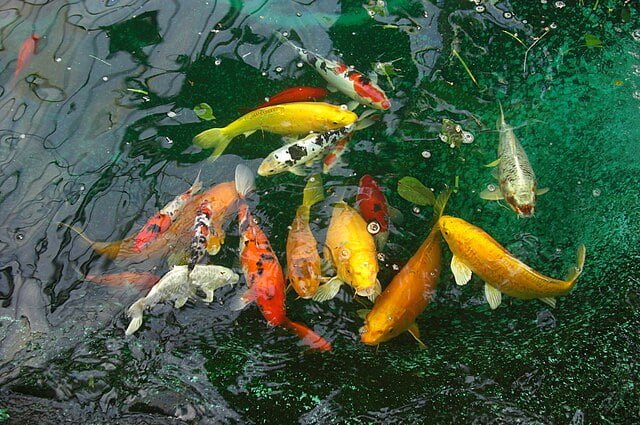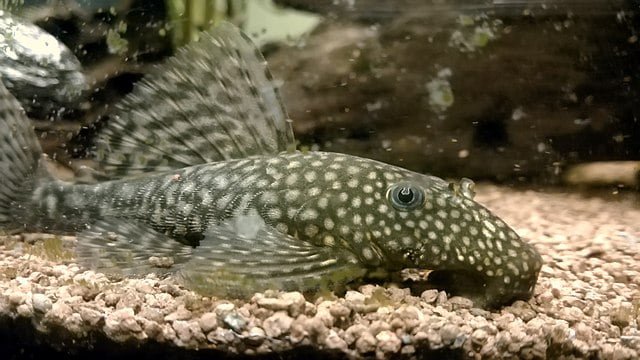
Koi fish are often raised in ponds that adorn some gardens and have a large number of “devotees” worldwide, due to their beauty resulting from their colorful scales and color pattern distribution. From vibrant shades of red, yellow, and white to intricate markings that adorn their scales, each koi fish is a unique masterpiece.
But the charm of these captivating creatures goes beyond their visual appeal. There is profound symbolism associated with koi fish in various cultures, where they are often considered symbols of strength, perseverance, and good fortune.
So, whether you are a koi fish enthusiast, a curious observer, or simply want to unravel the mysteries of these magnificent fish, join us on this journey as we dive into the world of koi fish and reveal the secrets they hold.
Taxonomy and Types of Koi Fish
- 1 Taxonomy and Types of Koi Fish
- 2 History and Cultural Significance of Koi Fish
- 3 What is the meaning of koi fish?
- 4 Feeding of Koi Carp
- 5 Reproduction of Koi Carp
- 6 Creating a Koi Fish Pond: Design and Maintenance
- 7 Diseases affecting Koi Carp
- 8 Conclusion
- 9 Bibliographic references
- 10 Entradas relacionadas:
Koi fish are bred in captivity and highly valued for their unique beauty and peaceful nature. What makes koi fish so special is their wide range of colors and patterns. Each koi fish is unique in its appearance.
From vibrant and striking tones to subtle and elegant ones, koi fish are a visual delight for those who admire them. Here is the taxonomic description of koi carp:
Order: Cypriniformes
Family: Cyprinidae
Genus: Cyprinus
Species: Cyprinus rubrofuscus
Common Name: koi fish, koi carp, Amur carp
Koi fish have become increasingly popular worldwide due to their beauty and adaptability to a wide variety of living conditions. Besides being a feast for the eyes, koi fish also have a calm and peaceful personality. They are known for their docile behavior and their ability to interact with humans.
Male koi can reach a maximum length of 28 cm. It is worth noting that koi carp can live an average of 50 years; however, specimens that have lived up to 226 years have been reported.
Stay Always Informed
Join our communities to instantly receive the most important news, reports, and analysis from the aquaculture industry.
Some of the most common colors in koi fish include red, white, yellow, black, and blue. These colors can appear in different combinations and shades, creating an infinite variety of patterns and designs in koi fish.
In Japan, the “All Japan Nishikigoi Show” competition is held annually, organized by the All Japan Nishikigoi Promotion Association, where experts evaluate the carp and choose the best of each variety.
Some of the most popular breeds include:
- “Kohaku”: white-skinned fish with large red spots. It was one of the first ornamental varieties established in Japan.
- “Showa”: black-skinned fish with white and red markings.
- “Asagi”: a koi with light blue coloring on the upper part and usually red on the lower part, but it can also have a pale yellow or cream coloring.
- “Sanke”: white with red and black spots.
- “Tancho”: Any koi fish with a single red spot on the head.
- “Kinginrin”: A fish with metallic scales.
- “Utsurimono”: Black-skinned fish with white, yellow, or red spots in a zebra-like color pattern.
- “Taisho Sanhoku”: Similar to the kohaku variety, except for the addition of small black markings.
- “Bekko”: Koi fish with white, red, or yellow skin with black spots.

Each of these breeds has its own charm and appeal, and koi fish breeders often specialize in one or several of them. In this regard, Domasevich et al. (2022) developed a tool based on image analysis to assess the quality of kohaku koi; while Shi et al. (2024) identified the genes related to the colors of different koi fish lines.
History and Cultural Significance of Koi Fish
Carp are a large group of fish native to Central Europe and Asia. Several species of carp were originally domesticated in China, where they are currently the primary species bred and used as food.
The history of koi carp dates back thousands of years in China and Japan, where they originated. These fish were first bred in China during the Warring States period (475-221 BC) and were later brought to Japan by traders in the 10th century.
For centuries, koi fish have been considered symbols of good luck, prosperity, and success in Japanese society.
The cultural significance of koi fish varies depending on tradition and region; however, it is important to highlight that the word “Koi” means “affection” or “love,” so they can be considered symbols of love and friendship in Japan.
In Chinese culture, koi fish are also considered symbols of prosperity and good fortune. It is believed that having koi fish in a pond or garden attracts luck and wealth.
On the other hand, Fife-Cook and Franks (2021) described the interactions between koi carp and humans, detailing that koi are not solely motivated to interact with a familiar human in anticipation of a food reward, and the interest can be motivated by a desire to interact for its own sake.
What is the meaning of koi fish?
In addition to their visual beauty, koi fish also have deep symbolism and meaning in different cultures and traditions.
In Japan, koi fish are considered symbols of strength, perseverance, and overcoming challenges. It is believed that koi fish have the ability to swim against the current and climb waterfalls, making them a symbol of success and personal achievement.
In China, koi fish are considered symbols of good fortune and prosperity. It is believed that having koi fish in a pond or garden attracts luck and wealth.
In art and literature, koi fish have also been a source of inspiration for centuries. In Japanese painting, koi fish are often depicted swimming in ponds or streams, symbolizing beauty, tranquility, and harmony. In Chinese poetry, koi fish are mentioned as metaphors for perseverance and determination.
Feeding of Koi Carp
Koi fish are omnivorous. They can consume a wide variety of foods, including peas, lettuce, and watermelon. Naturally, koi carp feed at the bottom of the pond, so you should choose a sinking food.
There is no consensus among experts regarding feeding frequency. Some recommend a single feeding in the morning, while others suggest feeding koi carp twice a day (morning and evening). In this sense, one criterion you can use is to observe your fish when you give them food.
In the case of breeding Amur carp, experts recommend providing an artificial food with 28-32% protein and 6-8% fatty acids, based on a dose of 3-5% of the weight of the breeders.
According to Aries et al. (2022), newly hatched larvae up to 4 days old feed on the yolk sac; when the larvae are between 4 and 7 days old, they should be fed boiled egg yolks once a day.
Sartika et al. (2021) studied the feeding of juvenile koi fish and concluded that a diet based on Artemia nauplii provides the best results in terms of growth and survival.
For larvae, feeding with 1 mm pellets is also recommended, which should contain at least 35% protein, 5% fats, 3% fiber, and 12% ash.
Currently, there are a variety of artificial foods available in aquarium stores. However, many of them rely on fish meal as the main source of protein.
In this regard, Zamani (2021) developed diets where up to 50% of fish meal is replaced with yellow mealworm flour (Tenebrio molitor), without affecting the growth of koi fish.
On the other hand, if you want to enhance the colors of your koi fish, you can use the pigment astaxanthin. Panjaitan (2023) recommends adding 125 mg/kg of food for Amur carp. Meanwhile, Amin et al. (2023) suggest the addition of 5% roselle extract (Hibiscus sabdariffa) as an additive in carp feed, which resulted in the highest red brightness value each week.
It is important to maintain a balanced and nutritious diet for koi fish to ensure their health and vibrant colors. Regular monitoring and adjustment of feeding practices based on the specific needs of your koi fish can help maintain their well-being and enhance their beauty.
Reproduction of Koi Carp
Koi fish tend to naturally spawn in the spring and summer seasons. It is recommended to use male Koi Carp that are 2 years old, while female Koi Carp should be 3 years old, in a 1:1 ratio.
The spawning process occurs at night. During courtship, the male Koi will start following the female, swimming closely behind her and nudging her.
Subsequently, the female Koi releases the eggs, which sink to the bottom of the pond, where the males fertilize them. It is recommended to remove the parents from the breeding tank to prevent them from potentially harming the eggs.
In Koi Carp, the fecundity ranges from 109,000 to 114,500 eggs per female, and the fertilization rate varies from 66% to 72%. Fertilized eggs appear visually clear, while unfertilized eggs are white. The eggs hatch in approximately 3 days without water circulation (Aries et al., 2022).
After a period of 7 days from hatching, you should classify the Koi larvae into black larvae and white larvae. The white larvae are directly seeded into the ponds, while the black ones are raised until they reach 5 cm or approximately 2 months of age (Aries et al., 2022).

Recent research by Santos and Furquim (2024) describes the process of crossbreeding the Nishikigoi line and the Hungarian carp (Cyprinus carpio), to obtain koi with better beauty, faster growth, and better body conformation.
Creating a Koi Fish Pond: Design and Maintenance
Caring for Koi fish requires special attention and knowledge. It is important to maintain a clean and healthy environment for the fish, with optimal water quality and proper feeding.
Koi Carp also need sufficient space to swim and explore, so it is advisable to have a pond or a large tank to accommodate them. Additionally, it is crucial to protect Koi fish from predators and provide them with suitable shelter.
If you are interested in having Koi fish, one of the best ways to keep them is in a pond specifically designed for them. Creating a Koi fish pond requires planning and careful consideration of various factors, such as pond size, water filtration, lighting, and vegetation. A well-designed pond will provide a safe and healthy environment for Koi fish, allowing them to thrive and display their beauty.
Table 01. Technical specifications for Koi fish care.
| Water Quality Parameter | Range |
| Cultivation Pond | Minimum of 10 m2 with an average depth of 1.5 m |
| Water Temperature (°C) | 15 – 25 |
| Water pH | 6.5 – 8 |
| Dissolved Oxygen (mg L-1) | >5 |
Regular maintenance of the pond is essential to ensure the health and well-being of the fish. This includes cleaning and regularly changing the water, providing proper feeding, and inspecting for potential diseases or health issues. A well-maintained pond will not only benefit the Koi fish but also create a beautiful space for you and your guests to enjoy.
On the other hand, there have also been experiments in breeding Amur Carp (C. rubrofuscus) in biofloc systems. In this regard, Ezhilarasi et al. (2019) report that the use of palm sugar as a carbon source is the best for the growth, non-specific immunity, and digestive enzyme activities of Koi Carp fry.

Diseases affecting Koi Carp
Koi fish are hardy. With proper care, these fish can withstand many of the parasites that affect tropical fish, such as infections caused by Trichodina, Epistylis, and Ichthyophthirius multifiliis.
However, Koi Herpesvirus (KHV) and Carp Rhabdovirus, which cause Spring Viremia of Carp (SVC), are two major concerns for Koi breeders. To date, the KV3 vaccine has been developed to immunize Koi Carp against KHV.
Koi Carp can also become infected with Carp Edema Virus (CEV), which causes Koi Sleepy Disease (KSD) and can eventually lead to fish death due to anoxia (Daniel et al., 2023).
On the other hand, Koi fish farming is often attacked by the bacterium Aeromonas hydrophila. In this regard, Silaen et al. (2023) recommend the use of 15 ml of papaya leaf extracts to treat Koi larvae affected by A. hydrophila, while Rosidah et al. (2021) studied the use of an aloe vera extract and recommended treating A. hydrophila-infected Koi larvae at a dose of 300 mg kg-1 of feed over a 48-hour period.
In this sense, only biosecurity measures such as prompt detection, isolation, and disinfection of tanks and equipment can prevent the spread of the disease and limit fish population loss.
Conclusion
In summary, Koi fish are fascinating creatures that have captured the imagination of people worldwide.
Their incredible range of colors and patterns makes them true living jewels, while their symbolism and meaning make them a symbol of strength, perseverance, and good fortune.
Whether you are a Koi fish enthusiast, a curious observer, or simply someone who appreciates beauty and symbolism in life, Koi fish are sure to captivate you with their unique charm. Furthermore, they can also be considered an ideal species for fish farming purposes to supply enthusiasts.
Bibliographic references
Amin, A. A. A., Dewi, N. N., & Rahardja, B. S. (2023, December). Improvement of Red Color quality in Koi Fish (Cyprinus carpio) through the addition of rosella extract in feed (Hibiscus sabdariffa). In IOP Conference Series: Earth and Environmental Science (Vol. 1273, No. 1, p. 012040). IOP Publishing.
Aries, G., Jubaedah, I., Anas, P., Musa, S., Wiryati, G., Subagio, A. A., … & Nugraha, E. (2022). Koi fish (Cyprinus rubrofuscus) seed production management in koi farm, Sukabumi District, West Java, Indonesia. Aquaculture, Aquarium, Conservation & Legislation, 15(6), 3258-3270.
Daniel, W. M., Morningstar, C.R., and Procopio, J., 2023, Cyprinus rubrofuscus Lacepède, 1803: U.S. Geological Survey, Nonindigenous Aquatic Species Database, Gainesville, FL,
Domasevich, Mikhail A., Hideo Hasegawa, and Tatsuya Yamazaki. 2022. “Quality Evaluation of Kohaku Koi (Cyprinus rubrofuscus) Using Image Analysis” Fishes 7, no. 4: 158. https://doi.org/10.3390/fishes7040158
Ezhilarasi, V., Verma, A. K., Rani, A. B., Harikrishna, V., Chandrakant, M. H., Ahmad, I., & Nageswari, P. (2019). Effect of different carbon sources on growth, non-specific immunity and digestive enzyme activity of amur carp (Cyprinus rubrofuscus Lacepede 1803) fingerlings in biofloc based rearing system using inland saline groundwater. Indian Journal of Fisheries, 66(3), 87-94.
Fife-Cook, Isabel, and Becca Franks. 2021. “Koi (Cyprinus rubrofuscus) Seek Out Tactile Interaction with Humans: General Patterns and Individual Differences” Animals 11, no. 3: 706. https://doi.org/10.3390/ani11030706
Panjaitan, A. S. (2023). Increased Color Brightness with the Addition of Astaxanthin in Koi Fish (Cyprinus Rubrofuscus) Feed. Journal of World Science, 2(4), 765-769.
Rosidah, R., Nugraha, A., Andriani, Y., Haetami, K., Anne, O., & Purnomo, A. H. (2021). Potential of Aloe vera for treatment of infection with Aeromonas hydrophila bacteria on koi fry. Sarhad journal of agriculture, 37(1), 64-74.
Sartika, E., Siswoyo, B. H., & Syafitri, E. (2021). Pengaruh Pakan Alami Yang Berbeda Terhadap Pertumbuhan Dan Kelangsungan Hidup Benih Ikan Mas Koi (Cyprinus rubrofuscus). Jurnal Aquaculture Indonesia, 1(1), 28-37.
Shi, X., Zhu, W., Guo, J., Lin, K., Fu, J., Wang, L., Dong, Y., Luo, M., & Dong, Z. (2024). Genome-wide association study reveals candidate genes critical for skin pigmentation in common carp (Cyprinus carpio) strains including koi. Aquaculture, 590, 741075. https://doi.org/10.1016/j.aquaculture.2024.741075
Silaen, Y. M., Istyadji, M., & Yulinda, R. (2023). EFFECTIVENESS OF PAPAYA LEAF EXTRACT (Carica Papaya L.) IN THE TREATMENT OF KOI FISH (Cyprinus Rubrofuscus) SEEDS INFECTED WITH AEROMONAS HYDROPHILA BACTERIA. INTERNATIONAL JOURNAL ON ADVANCED TECHNOLOGY, ENGINEERING, AND INFORMATION SYSTEM, 2(1), 1–8. https://doi.org/10.55047/ijateis.v2i1.522
Zamani A, Goli M. Effects of dietary inclusion of yellow mealworm (Tenebrio molitor) meal on growth performance and proteolytic enzymes activity of koi carp (Cyprinus rubrofuscus) juvenile. JFST 2021; 10 (4) :410-422 URL: http://jfst.modares.ac.ir/article-6-55158-en.html
Editor at the digital magazine AquaHoy. He holds a degree in Aquaculture Biology from the National University of Santa (UNS) and a Master’s degree in Science and Innovation Management from the Polytechnic University of Valencia, with postgraduate diplomas in Business Innovation and Innovation Management. He possesses extensive experience in the aquaculture and fisheries sector, having led the Fisheries Innovation Unit of the National Program for Innovation in Fisheries and Aquaculture (PNIPA). He has served as a senior consultant in technology watch, an innovation project formulator and advisor, and a lecturer at UNS. He is a member of the Peruvian College of Biologists and was recognized by the World Aquaculture Society (WAS) in 2016 for his contribution to aquaculture.




